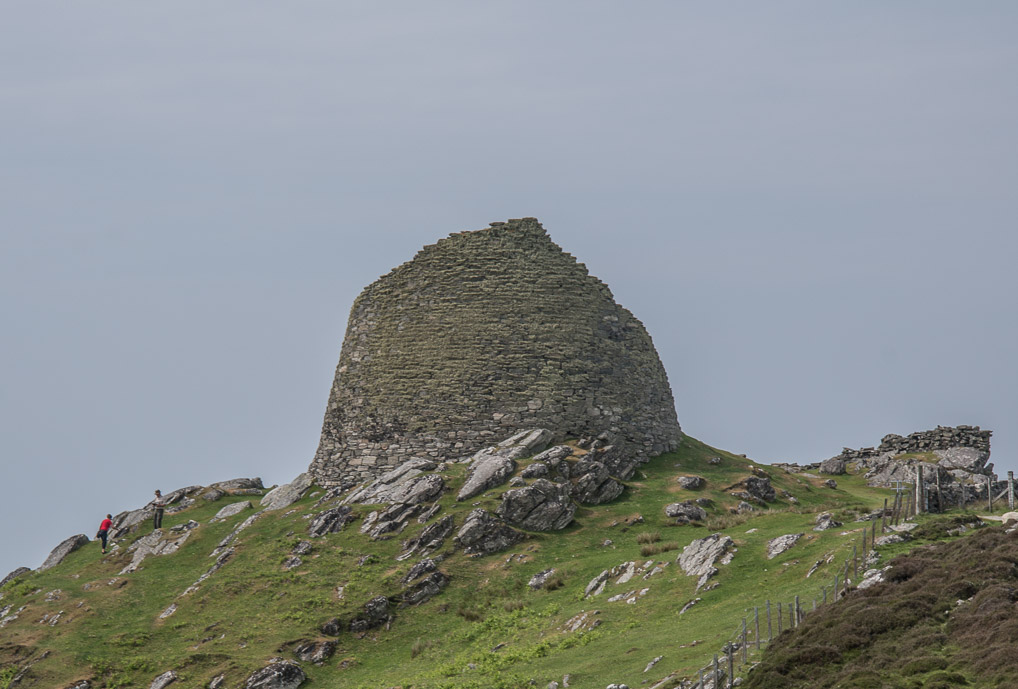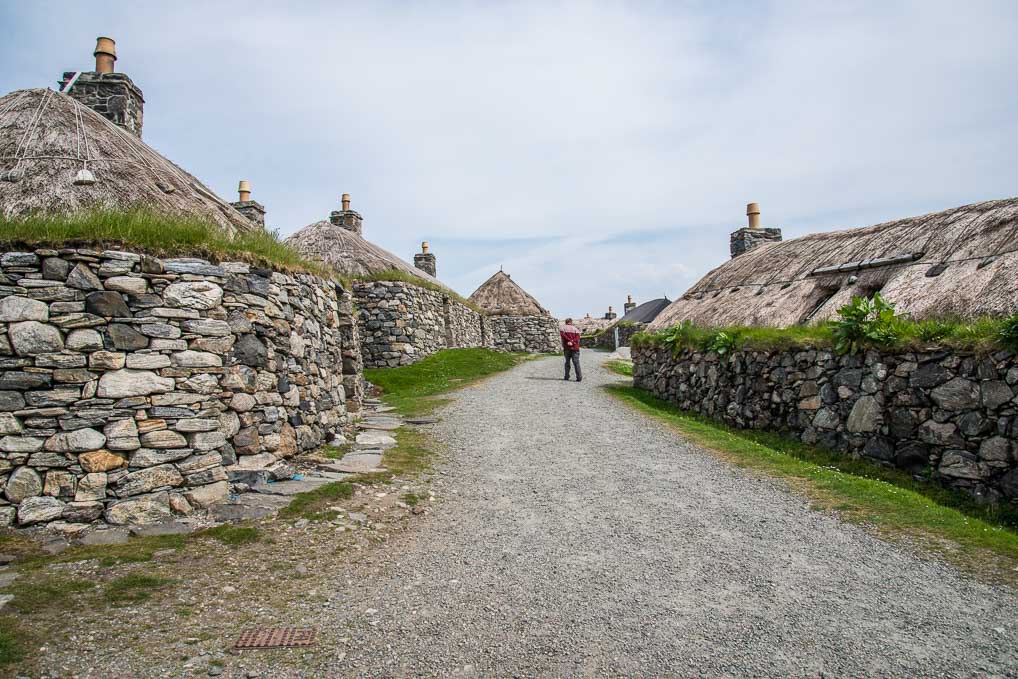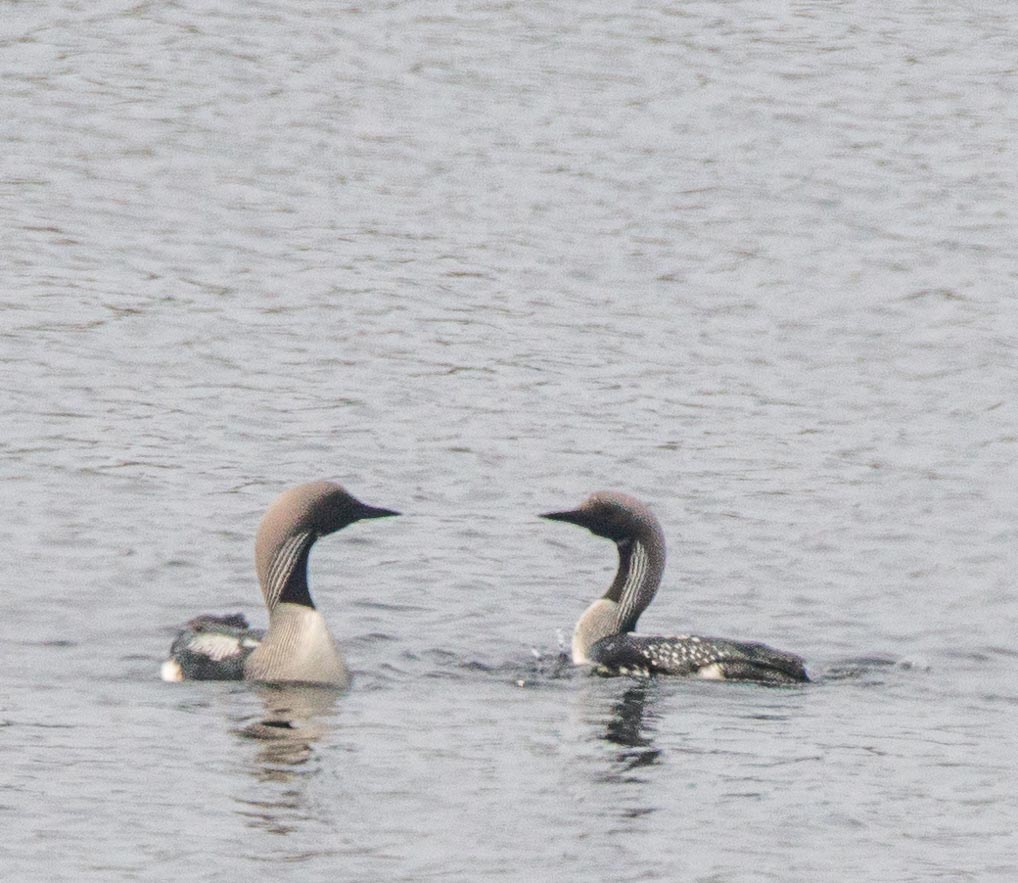After yesterday’s lamentably lethargic start to the day, today we have attacked the island of Lewis with vim and vigour.
I cannot find a satisfactory answer as to why Lewis and Harris, which are part of the same landmass, have acquired different names. But as we drove from Harris to Lewis the difference between the two became obvious. Harris is rocky and mountainous whereas Lewis doesn’t really have any mountains and is a sort of undulating peat bog, full of small fresh water lochs.
Our first stop was the Calanais Standing Stones. These are an impressive set of standing stones, about 5,000 years old, set in a cross pattern with an inner circle. They predate Stone Henge and organisation needed for the erection of this and several other nearby henges has somewhat puzzled experts. It it not obviously orientated for indicating particular times of the year and although there was a burial in the centre, this dated from a later period. It goes to show that this remote part of Europe was occupied by mankind from a very early date.

Calanais Standing Stones
From here we moved on to the Dun Carloway Broch, which is an ancient defensive structure which is thought to be over 2,000 years old. Brochs, which are thought to be a type of defensible farmhouse, are apparently common in the Hebrides, but this is a particularly large example. They were built entirely by dry stone techniques, which shows incredible skills since the largest are 13 metres high! Brochs stopped being built around the year zero, maybe because the roofs required an enormous amount of timber, of which Lewis had little. It is notable as you drive around the Outer Hebrides, that these days there are virtually no trees on any of the islands.

Dun Carloway Broch
What was planned to be our final stop of the day was at the Gearrannan Blackhouse Village. This was an old village which was abandoned in the early 1970s when the last inhabitants were moved to council housing which did not require the maintenance of thatch and stonework. The origin of the word “blackhouse” seems unclear. It could be to distinguish them from the newer houses painted white or it could relate to a Gaelic word for thatch.

Gearrannan Blackhouse Village
The village was renovated in the 1990’s and now some of the thatched cottages, heated by peat fires, can be used as holiday cottages. We had an interesting visit, the most fascinating part of which was a retired weaver demonstrating the hand weaving of Harris Tweed. Apparently Harris Tweed doesn’t have to come from Harris, but it must be hand woven in either Lewis or Harris, from wool dyed in the islands. The machines used by most weavers are about 90 years old and made in Keighley in Yorkshire. Newer machines have been manufactured but apparently need more maintenance than the old ones!

Harris Tweed Hand Loom
We thought this was our last stop of the day, but we were wrong! As we drove the short distance to our campsite, what did I see on a loch by the road, but some divers of some sort. Basil was wrestled to a halt and I jumped out with my binoculars and confirmed they were another of the rare divers only found in the very north of Scotland – Black Throated Divers. Out came the birding lens, and although they were too distant for first class images, I managed to capture a reasonable image of a pair.

Black Throated Divers
Our campsite for the night is not one of the best of our trip, being small and a bit cramped. The views are also not very good for such a beautiful part of the world, but it will do. Eiean Fraoich campsite is £19 with electricity and showers are £1 extra (58.319380, -6.686835).
Tomorrow is our last full day in the Outer Hebrides and I think we will explore the far north, called the Butt of Lewis.
